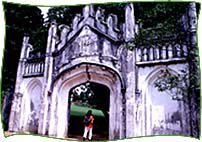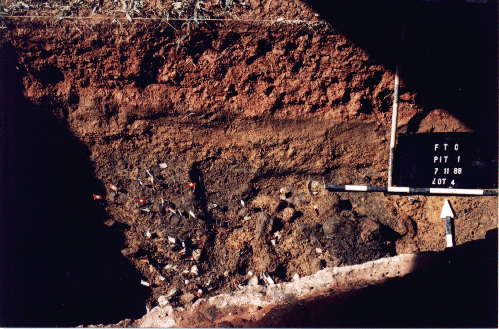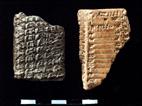
The reason for choosing to excavate at Fort Canning Hill was that history suggests that a Malay kingdom had once existed there. Unfortunately the written sources of information available from that earler period of Singapore are not very detailed nor are they easy to interpret. The situation prior to excavation was somewhatcomparable to that faced by Heinrich von Schliemann, the archaeologist who discovered the site of Troy, the city made immortal in greek literature in the epic poems of the illiad and the Odyssey. Von Schliemann disagreed with the prevailing consenses of archaeologists of his time, which was that Troy never in fact existed. By carefully reading the sections of the lliad pertaining to Troy’s location, Von Schliemann ultimately succeeded in discovered a site which has been to be that of the city where the greeks fought their long siege. (In fact the site consists of many levels and has since been shown that the greek attack which inspired Homer took place at a different level of the site than Von Schliemann had concluded; however , the identity of the site as Troy is confirmed.)
*taken from Archaeological Research on the Forbidden Hill of Singapore: Excavations at Fort Canning, 1984 by John N. Miksic*

While we can state with certainty that people were living on or near
Fort Canning Hill about 600 years, we can say little about what they were actually doing
there. We can sketch in some of the blank spaces in our picture of Singapore in the
fourteenth century by reffering to the historical sources. These texts, however , are
unlikely to provide any more information than they already have, although they attain
somewhat greater authority by virtue of having been demostrated by the archaeological
discoveries to be at least based on reality . This reality, however , is not that of the
early Singaporeans themselves. The only text which might have given us some direct message
from those people was engraved on the Singapore stone, a rock bearing an ancient
inscription which stood near the mouth of the Singapore river. This stone was blown up
intentionally in the nineteenth century. While one cannot be certain that no other early
inscriptions will ever be discovered, the possibility of such new data must be estimated
as extremely slight
.
The types of artefacts found in Fort Canning were mainly those of the 14th century Song Dynasty.
This basically tells us that there could be a Song civilization in Fort Canning before. However, as absurd as this sounds, it is impossible that there was a Song Dynasty in Singapore long ago.
Therefore, we can make the assumption that the traders which
came to Singapore actually had access to the Song Dynasty items. It is either the Chinese
or the Europeans that brought the artefacts over for trade
.


